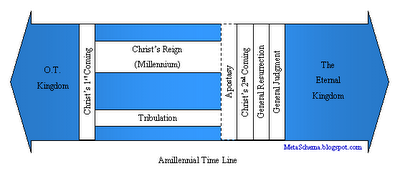 This essay will attempt to demonstrate that the presuppositional apologetic method is a potent posture yet falls short as a methodology for comprehensibly demonstrating the legitimacy of the Christian worldview. Presuppositional apologetics is a systematic defense of Christian theism based on the assumption of certain basic propositions. While it is often associated with fideism which is placing faith above reason, not all presuppositionalists are fideists.[1] In fact, the presuppositonalist would argue that reason itself proves God’s existence. The apologist simply assumes the truth of Christianity to varying degrees and argues from that platform. This varies from a fideistic position that non-Christians are so corrupted by their sin nature that they are incapable of responding to evidence to a more modest position that belief in God is properly basic. The rationale offered by presuppositionalists is that everyone presupposes basic premises which define their worldview. It is certainly true that some beliefs such as the law of non-contradiction must be presupposed for rational discourse to be possible. Accordingly, this is known as a properly basic belief. Philosopher Alvin Plantinga has convincingly argued that belief in God can also be held as properly basic.[2] The different presuppositional approaches all share this epistemological foundation yet vary on issues of truth, scope of human depravity and use of evidence.
This essay will attempt to demonstrate that the presuppositional apologetic method is a potent posture yet falls short as a methodology for comprehensibly demonstrating the legitimacy of the Christian worldview. Presuppositional apologetics is a systematic defense of Christian theism based on the assumption of certain basic propositions. While it is often associated with fideism which is placing faith above reason, not all presuppositionalists are fideists.[1] In fact, the presuppositonalist would argue that reason itself proves God’s existence. The apologist simply assumes the truth of Christianity to varying degrees and argues from that platform. This varies from a fideistic position that non-Christians are so corrupted by their sin nature that they are incapable of responding to evidence to a more modest position that belief in God is properly basic. The rationale offered by presuppositionalists is that everyone presupposes basic premises which define their worldview. It is certainly true that some beliefs such as the law of non-contradiction must be presupposed for rational discourse to be possible. Accordingly, this is known as a properly basic belief. Philosopher Alvin Plantinga has convincingly argued that belief in God can also be held as properly basic.[2] The different presuppositional approaches all share this epistemological foundation yet vary on issues of truth, scope of human depravity and use of evidence.
Norman Geisler delineates four main approaches based on their means of establishing truth: revelational, rational, systematic consistency and practical presuppositionalism.[3] The revelational approach championed by Cornelius Van Til is perhaps the most well-known and also the most fideistic. He boldly proclaimed, “that all reasoning is, in the nature of the case, circular reasoning.”[4] This style presupposes the authority of scripture and also that those who do not hold this presupposition are incapable of even basic reasoning.Greg Bahnsen is advocate and teacher of Van Til’s method. James White of Alpha and Omega Ministries is another modern day practitioner of this Van Tilian style.[5] Here is James discussing the topic:
Rational presuppositionalism is a less strident variant employed by Gordon Clark and Carl F. H. Henry that allows that the secular mind still can use logic and reason. The test for truth is the law of non-contradiction.[6] John Carnell and Gordon Lewis pioneered a method, systematic consistency, which uses the rational approach with the additional qualifications that it must take account of all knowledge and meet man’s basic needs.[7] The style most open to non-believers is the practical approach in the style of Francis Schaeffer who set about demonstrating that all other worldviews are not livable in a consistent fashion.[8] These approaches share the assumption of Biblical revelation yet vary on discerning truth and the scope of unregenerate depravity. There seems to be valid thinking behind each variety and I maintain respect for the respective apologists even if I do not entirely agree with all of their methodology.
It seems reasonable for believers to assume theism because the average Christian does not have time to master complicated philosophical arguments. However, trained apologists should be able to employ those arguments to provide warrant for the average believer. Yet some presuppositionalists fail to distinguish between belief in God and belief that God exists. Many presuppositionalists completely reject traditional apologetics as a futile concession to the skeptic’s methods.[9] Yet we all use the same rules of logic. A principle criticism offered by Geisler is that there is a confusion of epistemology and ontology. He writes,
The Christian fideist may very well be right about the fact that there is a God, but this begs the question unless he can tell how he knows this is the case. God may indeed have revealed himself to us through the Bible, but how do we know that the Bible is the Word of God? [10]
Van Til did not seem to mind question begging. His style is tactically advantageous but it is unlikely to influence non-Christians. While it is true that men suppress the truth, evidential apologetics causes even hardened skeptics like Antony Flew to change their minds. Ultimately one should remember that Jesus and the apostles appealed to evidence, (Jn 2:23, 1 Cor. 15:3-7).
This essay has briefly summarized the presuppositional method and its four approaches. God’s existence and biblical revelation were defined as the basic foundation. The different styles were differentiated by the scope of their assumption and their test for truth. Critique was offered that the method strongly proclaims that Christianity is true but falls short of adequately explaining why it is true. A hybrid approach along the lines of Schaeffer’s technique in Escape From Reason and other works are worthy of further study. I must admit I am very interested in the ideas and techniques employed. It seems that there are some valuable tactics and truths in this method yet is not entirely convincing.
This site is powerful example of how the presuppositional method can be employed: Proof That God Exists
[1]Norman L. Geisler, Christian Apologetics, Includes Index. (Grand Rapids: Baker Book House, 1976), 47.
[2] Thomas Provenzola. “Apologetics, Reformed.” In The Popular Encyclopedia of Apologetics, by Ed Hindson, & Ergun Caner, ( Eugene, OR: Harvest House Publishers, 2008), 59.
[3]Norman L. Geisler, Baker Encyclopedia of Christian Apologetics, Baker reference library (Grand Rapids, Mich.: Baker Books, 1999), 607.
[4]Cornelius Van Til and William Edgar, Christian Apologetics, 2nd ed. (The Presbyterian and Reformed Publishing Company: Phillipsburg, NJ, 2003).
[5] White, James. Alpha and Omega Ministries. n.d. http://aomin.org/articles/bio.html (accessed 10 08, 2010).
[6] Geisler, Baker, 607
[7] Geisler, Baker, 607
[8] Geisler, Baker, 607.
[9] Mark Coppenger. “Presuppositonalism.” In The Popular Encyclopedia of Apologetics, by Ed Hindson, & Ergun Caner, 401-404. (Eugene, OR: Harvest House Publishers, 2008), 402
[10]Norman L. Geisler, Christian Apologetics. (Grand Rapids: Baker Book House, 1976), 61.




